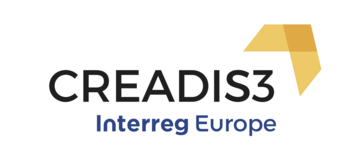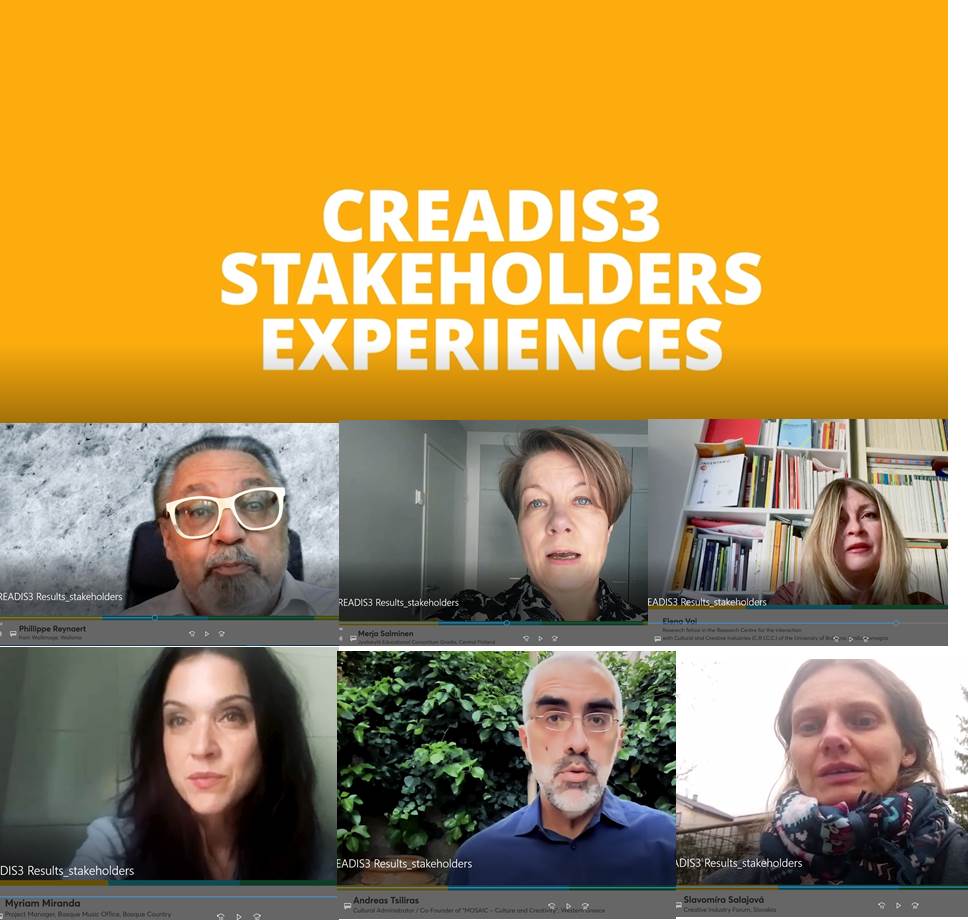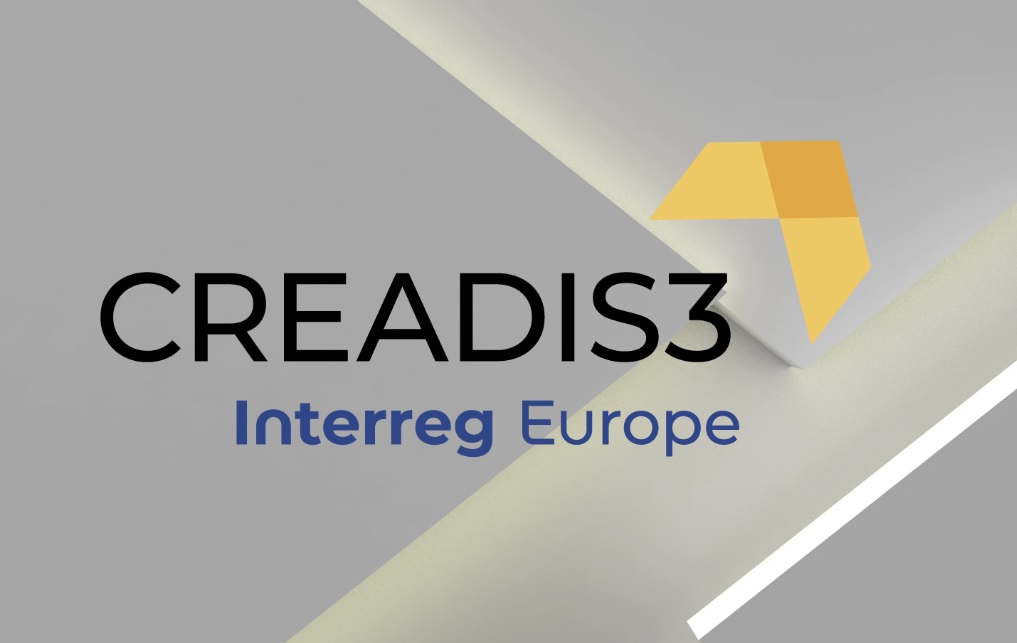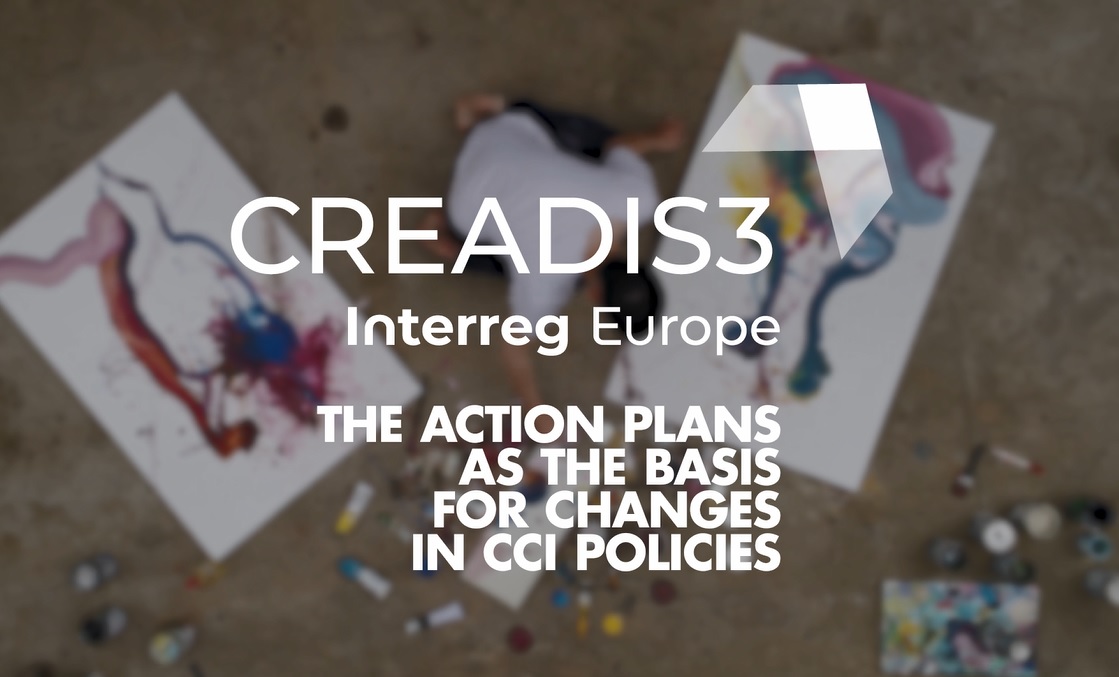The 3rd stakeholder group meeting was held on May the 24th. Delphine GODERNIAUX presented the progress of the CREADIS3 project by detailing the schedule. This project is at a pivotal stage of its progress. Indeed, thanks to the various study visits, the exchange of experiences and the analysis of the partners' ICC ecosystem mappings, the drafting phase of the action plan will be able to start in the coming months.
DGO6 is currently collecting data on ICCs in Wallonia. This statistical work aims to have a better vision of this sector on the territory. In view of a comparative evaluation with the other European partners, it was chosen to select the 4-digit NACE codes. NACE is the statistical classification of economic activities in the European Community.
10 sectors have been identified: Advertising, Architecture, Designer Fashion Design, Music, Visual arts, Performing arts, Publishing of books and press, Audiovisual (Cinema, Film, Video, Radio & TV), Heritage, Software, Edition of Multidisciplinary electronic games (photographic activities, PI, ...)
The number of legal persons by sector was presented as well as the total number of legal persons by province. The fields of architecture, music, visual arts and entertainment as well as book publishing and the press account for the most legal companies in Wallonia. Following the discussions, the DGO6 notes the absence of a category specifically related to the digital sector. She will learn about the possibility of creating one. However, the digital is often present in several trades, so it will be, a priori, difficult to isolate data related to this sector. In terms of statistics, it is also recommended to contact the Human Org Institute (Numédiart), which has already conducted this type of study as part of Mons 2015. When this work is finalized, the DGO6 will make a more complete presentation.
Delphine Goderniaux presented the progress of the work done at the DGO6 in terms of "mapping" of the ICC sector. It is not a question here of simply responding to the demand for a European project but also to clarify a Walloon landscape that has changed and become blurred over the years. This is an opportunity to put things flat, to take a little height so that everyone can better know the actors of the ICC ecosystem in Wallonia.
The DGO6 will then carried out a work of correction and compilation of the remarks and will propose an amended cartography of the Walloon ICC ecosystem that it will propose on the agenda of a future meeting. In particular, it will be important to harmonize the presentation of the actors / services of the ICC ecosystem and not to mix the structures / infrastructures / operators, the services offered and the general missions of these operators.
Following the workshop, a SWOT / SWOT analysis of the ICC sector conducted by DGO6 was presented. Regarding the weaknesses of Wallonia in relation to the ICC sector, the audience notes that the small size of the Walloon territory does not facilitate expansion or access to this market. Regarding the external factors threatening the ICC sector in Wallonia, it is proposed to add: difficulty understanding and standardization of this heterogeneous sector, lack of studies that could study other impacts than financial profitability, flight of skills / brains (in connection with the small size of the Walloon territory), digitization and artificial intelligence to the detriment of the artistic and the creative.
The persons participating in the study visits to Bratislava (March 2018) and Central Finland (May 2018) took the floor to share their impressions and learnings following their participation in a study visit. After that, the DGO6 quickly presented the next study visits.
Finally, the DGO6 briefly presented the dates and the subject of the study visit to be organized in Wallonia as part of the CREADIS3 project on 1-2 November 2018, which theme will be Digital Arts and site visit to the KIKK Festival is also planned.




